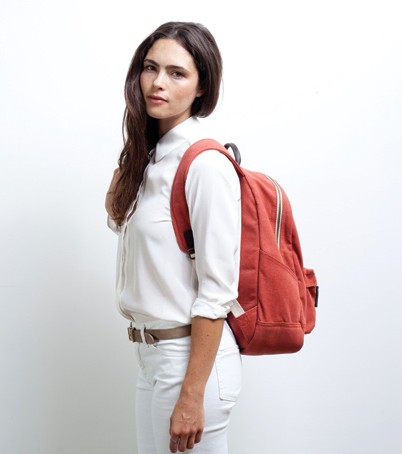
Any fashion garment carries specific costs: fabric, zippers, buttons, factory production, shipping, overhead for human resources, warehouses, offices, computers and heath care. Rather than allow the final price to increace by up to four times the base manufacturing cost, Everlane sells directly to customers. The tangible result is an online store, featuring a basics collection of key pieces like t-shirts, tanks, backpacks, weekender bags and belts. As the collection expands with items such as cashmere knits, customer feedback guides the design of future items. And while a brand with flagship locations would seem to fit a similar mode, that type of model typically inflates its price as not to undercut its third party stores.
Part of Everlane’s appeal is the ongoing dialogue with customers to create a complete, online experience. Michael Preysman, Founder and CEO, explains, “Transparency is a big thing that we do.” As opposed to traditional fashion brands, which maintain exclusivity through privacy, Everlane has an aspiration for the democratization of fashion. That is, the brand opts for total transparency, sharing its cost to make goods, its production timeline, future plans, market research and daily developments with the public. In just over a year, more than 600,000 users have registered through Everlane’s website.
Setting aside social media and online interface, strong products are the main factor to guide Everlane’s success. Preysman transitioned to retail after a career in finance. And while he lacks formal design training, Preysman says, “I like fashion a lot, but I like it from the aspect of design. How do you gather a group of things that tell a story?”
Rather than the traditional model of a head designer dictating a style perspective, an Everlane design could originate from a pattern maker or a computer programmer. Preysman claims, “The engineers are talking to the clothes designers. We have almost 20 people. I literally didn’t know a single one a year ago.” He simply insists on a clean aesthetic, explaining, “It’s much more of the Paul Rand school of thought. It’s cliché to say, but a very Swiss school of design. Everything’s very structured, proportioned out, not very fluid.”
Everlane has strayed from the strictly online approach to increase general awareness. Its June 2012 pop-up store in NYC’s SoHo neighborhood was titled Not a Shop. Products were on hand, but orders were only available via the online store. Likewise for the LA event, held this past August at Space 15 Twenty.
The company takes its name from “ever,” to imply timelessness, and “lane,” for a nostalgic idea of shopping on a favorite street. In the end, Everlane operates like a department store’s private brand, but with humble margins. The concept is truly grounded in the classic traditional of American sportswear, finding a perfect balance between price and quality.
Text by Michael Cohen
Photos by Kathryna Hancock

